The continuous rotation servos that i use for this robot needs wheels to move it. Since i forgot to buy the corresponding wheels, i decided to make my own. Those wheels are made of two elements : the wheel in itself, made to be printed out of stiff plastic (PLA, ABS, Nylon...), and the tire, made for printing with flexible and rubbery filament, such as ninjaflex or semiflex.
The wheels
I made the wheels dimension so that it keeps the robot level with the omnidirectionnal wheel that i am using as a third contact point on this robot. I decided to make my wheels a bit like car wheels, ie not a plain disc, but a central hub for fixations, arms exiting from the hub, and the rim itself around all of that. I chose to have 5 arms because that's what i see on most cars, so i guess it must make sense either from a technical or aesthetic standpoint. Anyway, i made a parametric file for creating a wheel of configurable diameter, with also a configurable number of arms. All the files are available on the github of the project, including stl files ready for printing.
Here is the look of my wheels once printed :
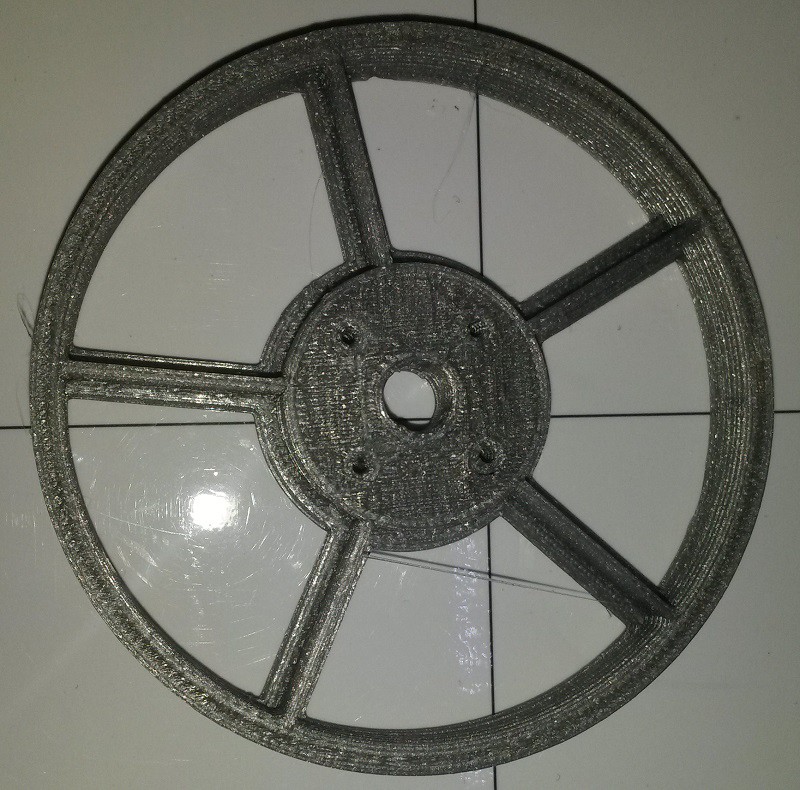 The central hole is for the servo screw (wider than needed for easy access), and the 4 holes surrounding it are there to secure the servo horns. Those are 2mm diameter holes.
The central hole is for the servo screw (wider than needed for easy access), and the 4 holes surrounding it are there to secure the servo horns. Those are 2mm diameter holes.
The tires
The tires are made to be printed out of ninjaflex or semiflex. Again, the files are available on the github, with the stl. I managed to print the tires properly without any support or special tricks, only a slow speed of 30mm/s.
Here is the result :
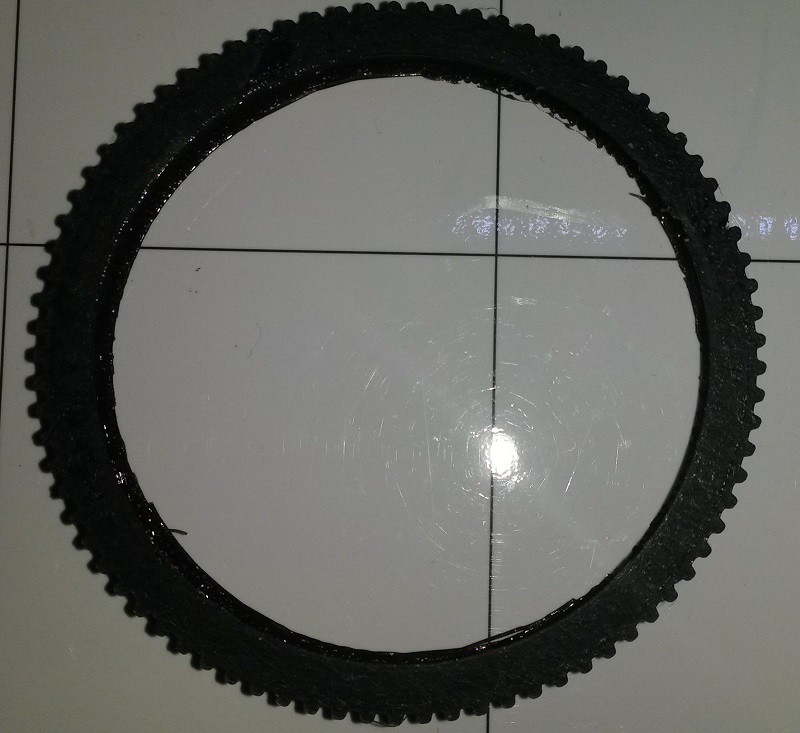 I made the tires 97% the size of the wheels so that with the elasticity of the material, it stays firmly on the wheel. On the next picture, you can see that this really is flexible filament :
I made the tires 97% the size of the wheels so that with the elasticity of the material, it stays firmly on the wheel. On the next picture, you can see that this really is flexible filament :
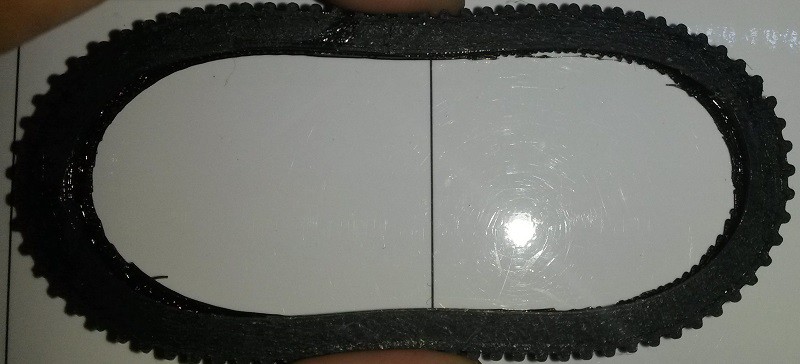 For better grip in some cases, i added small bars (1mm thick) on the outside of the tire. There are 81 of those (because it's (3²)², and it seemed fine in the render). Again, this is a parametric design, and only one variable sets this, so if one wants to have a certain number of "tooths" it is entirely possible.
For better grip in some cases, i added small bars (1mm thick) on the outside of the tire. There are 81 of those (because it's (3²)², and it seemed fine in the render). Again, this is a parametric design, and only one variable sets this, so if one wants to have a certain number of "tooths" it is entirely possible.
In order to place the tires on the wheel, only a bit of force is needed, and some patience to get it in place. Once there, it does not move, thanks to the lips on the side of the tire.
The tires provides a really good grip to those wheels. Without, they would be really slippery.
I have not yet tested semiflex here, and it may require to have a 99% diameter or more since it's much less elastic.
The assembled wheel
Once the tire is on the wheel, we get this result :
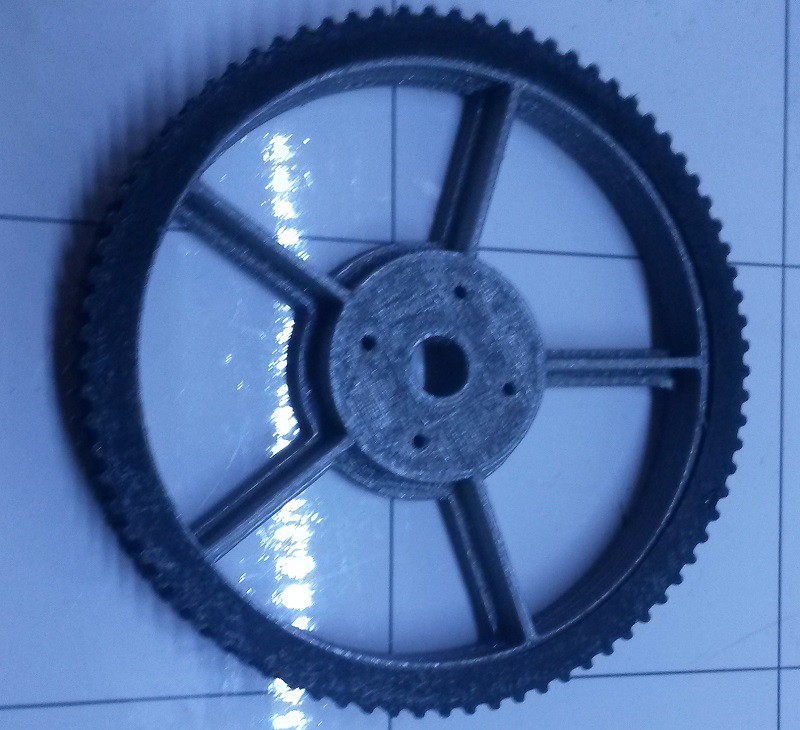
The next step is to secure the servo horns with the m2 screws. I drill the servo horns at 2mm in the 1mm existing holes (middle holes on each corner), obtaining the result depicted below.
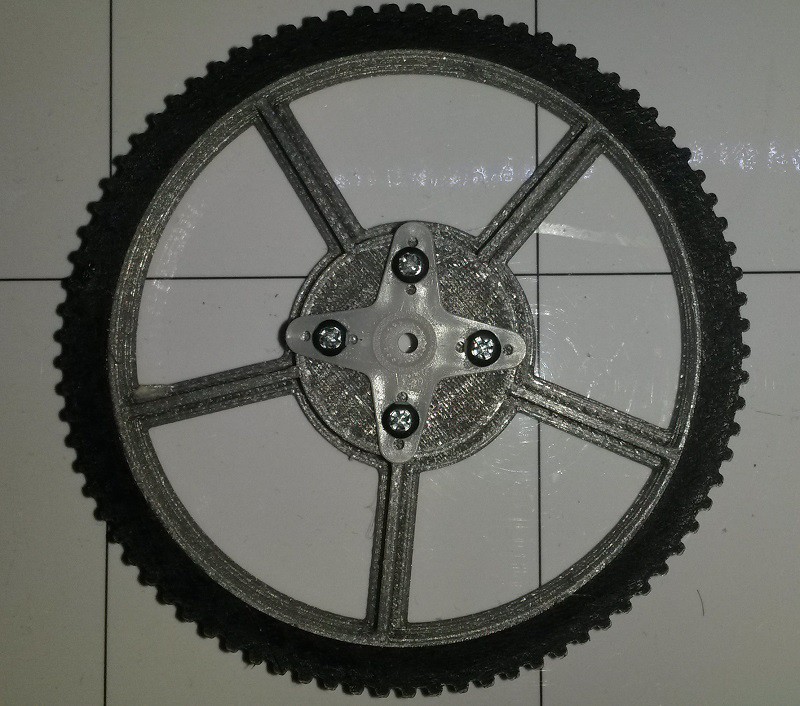
Then we can put the wheels on the servos and secure them with the tiny screw provided with the servo.
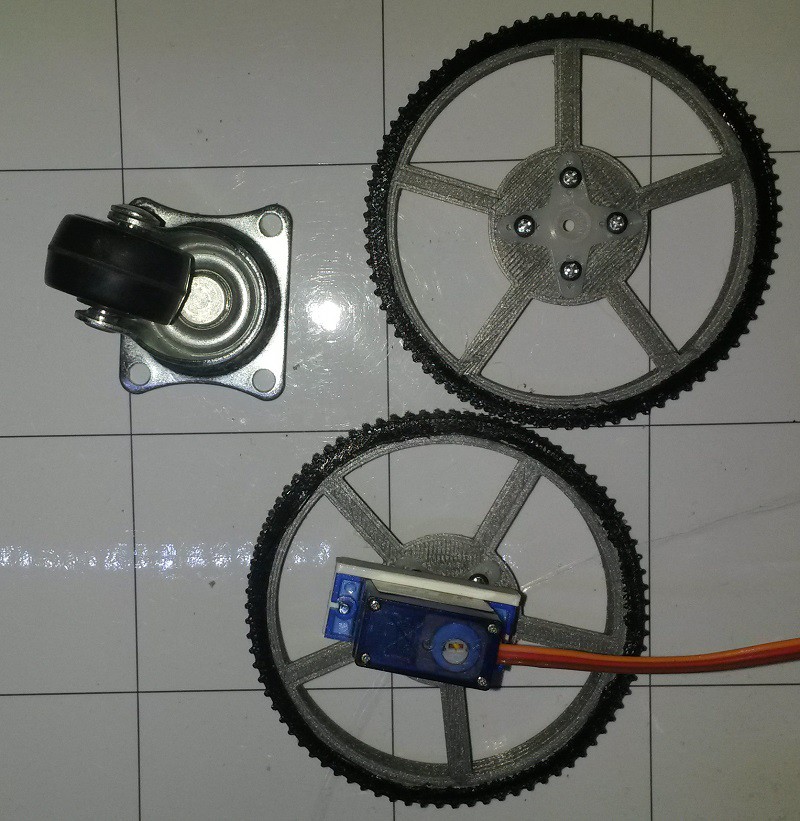
 Audrey Robinel
Audrey Robinel
Discussions
Become a Hackaday.io Member
Create an account to leave a comment. Already have an account? Log In.